
Cultures around the world use rituals and practices to inspire feelings of health and well-being. As we search for individual growth and wellness, we’re inspired by these eight therapeutic activities believed to bring relaxation, peace, and joy.
A common thread weaving through the tapestry of cultures around the world is the desire for happiness—whatever that may mean to them. Feelings of peace, love, security, and an absence of loneliness are desires most people share. In other words, a sense of wellness and well-being.
To discover their happiness, cultures embrace a variety of practices that provide comfort and feelings of relaxation. Our exploration took us on a journey around the globe, where we encountered an array of wonderful and fascinating activities.
Japan
Shinrin-yoku
Also known as forest bathing, this practice is beautiful in its simplicity. Connect with nature as you walk, relaxed, in a natural environment while remaining in the moment. Take deep breaths while you receive the benefits of revitalizing energy and peace through this Japanese forest therapy.
Did you know?
Shinrin-yoku is so mild in its simplicity that it’s available to almost everybody. Just breathe, walk, relax, and repeat.
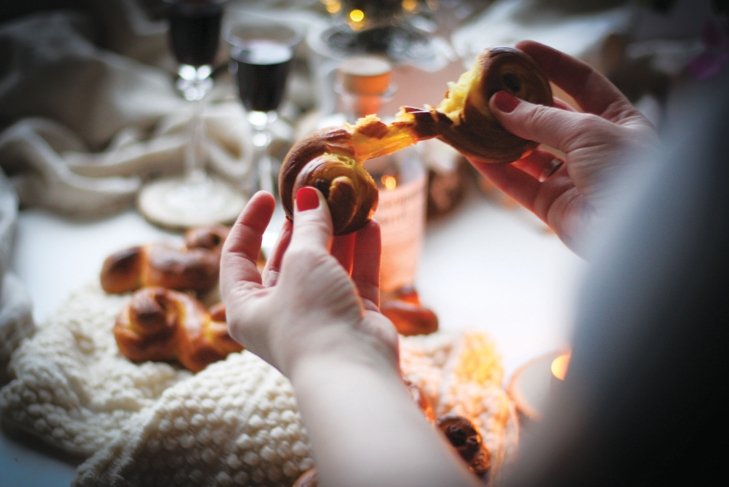
Sweden
Fika
The Swedish practice of enjoying a slow, luxurious coffee break, fika (used as both a noun and a verb) often involves cake or pastry and tea or coffee. Fika is viewed by Swedes as a pleasurable right that contributes to increased well-being and a break from “everything”—even for just a few minutes.
Did you know?
In Sweden, fika is taken so seriously that employers provide fika breaks. Often, companies will have team meetings over fika and sometimes even offer two per day.

China, Egypt, and Vietnam
Cupping
Using small glass cups or bamboo jars, cupping is the practice of using heat to create suction within the cups and then placing them on areas of the back and neck. It’s believed to provide deep feelings of relaxation and relief from tension, and may be detoxifying. These cultures believe that stagnation causes pain and tension, and so cupping is a way to reduce this. The practice leaves circular bruises from the effects of the suctioning but is not considered painful.
Did you know?
Cupping has become popular with athletes for workout recovery and muscle relaxation.
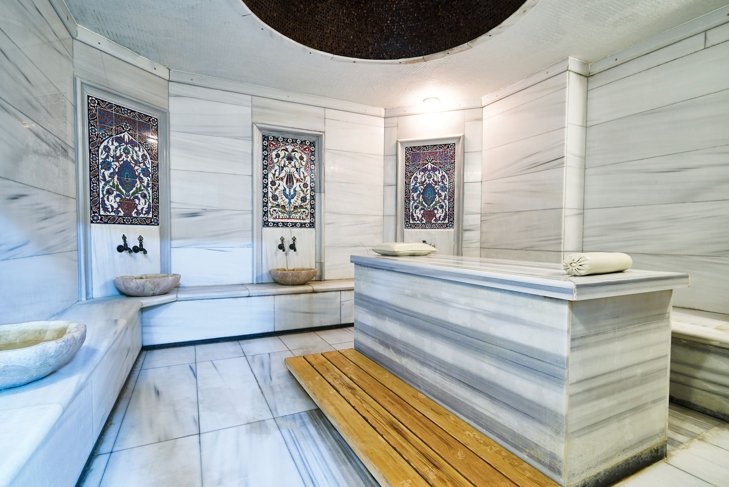
Egypt, Morocco, and Turkey
Hammam
Traditional hammam is the practice of cleansing the body, mind, and soul through both dry and steamed baths. Hammam takes place in a bathhouse and is practised in a ritualistic fashion. It is believed that hammam produces feelings of relaxation and well-being.
Did you know?
Hammam involves steps in the following rooms:
- a dry, hot room to relax and acclimate to heat
- a steam room to rid the body of impurities
- a bath room to receive traditional hammam treatment
- a room to rest, relax, and enjoy tea
- an optional massage room to complete the experience

Norway
Friluftsliv
Translated as “outdoor life” or “open-air living,” friluftsliv is a deeply rooted Nordic concept of connecting and unwinding fully with the outdoors and is a rich part of everyday life. Friluftsliv can involve an outdoor sauna with friends, a walk or run through the forest, or an energizing mountain meal.
Did you know?
You can learn more about the invigorating effects of friluftsliv in a short online documentary, available at vimeo.com/64425721.
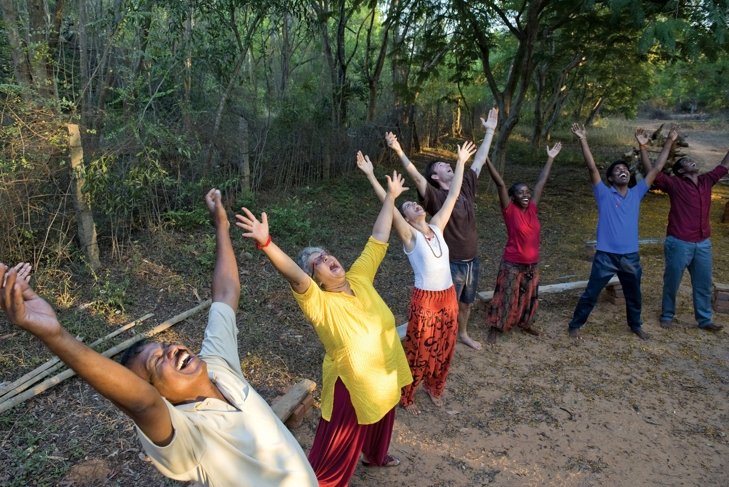
India
Laughter yoga
Available in laughter clubs all over India, observers of this enjoyable wellness pastime gather to practise light yoga stretches and flexibility exercises while laughing out loud. A path to friendship, bonding, and relaxation, laughter yoga has become popular in many parts of the world.
Did you know?
World Laughter Day takes place on the first Sunday of May every year. The first celebration was on January 11, 1998 in Mumbai, India, and was arranged by Dr. Madan Kataria, founder of the worldwide Laughter Yoga movement. The day is now celebrated worldwide.
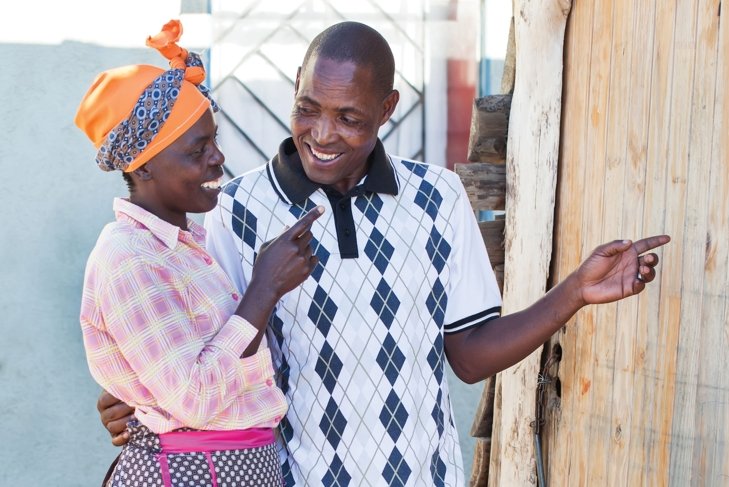
South Africa
Ubuntu
Roughly translated as “humanity toward others,” ubuntu is the South African philosophy that all beings are connected. As a practice, it embodies a sense of communal responsibility toward all humanity.
Did you know?
Under ubuntu philosophy all people are welcomed and protected within any home they visit—payment is not expected.
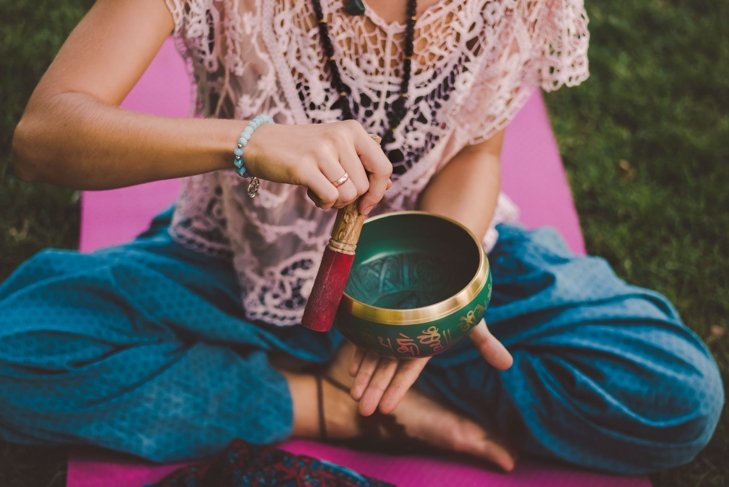
Tibet
Tibetan singing bowls
This ancient practice has been used for centuries for healing and meditation. The bowls create an array of vibrations and sounds believed to reduce tension, elevate mood, and provide deep feelings of contentment and wellness.
Did you know?
To create the melodic sounds from a Tibetan singing bowl, a small mallet
is pressed firmly in a circular motion around the edge of the bowl.
Whatever you crave, however you unwind, integrating a new and unique practice in your life will help you enjoy alternate pathways to calm and relaxation. At the very least, you’ll have some fun, so what are you waiting for? Enjoy a world of wellness.
























